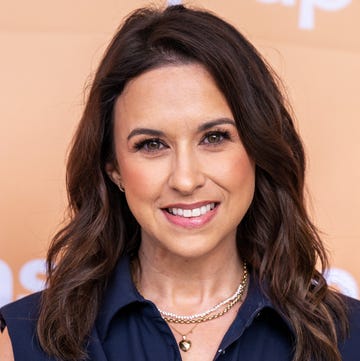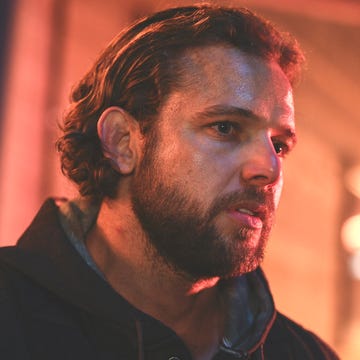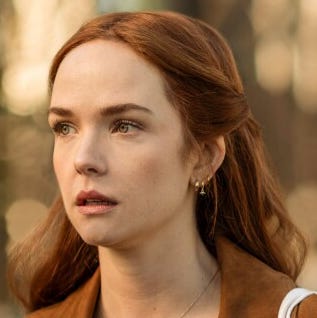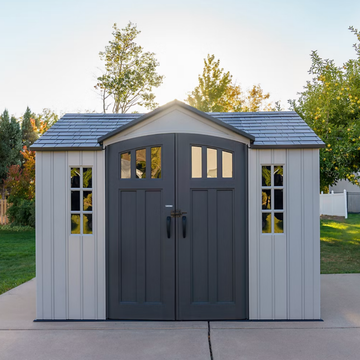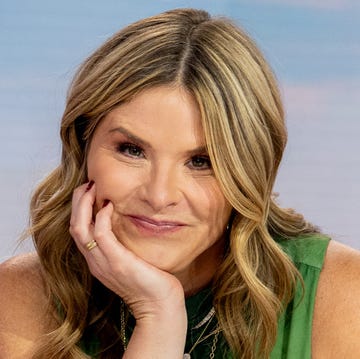I haven’t always been blind. When my wife was pregnant, I developed a cataract that prevented me from driving at night, and when my daughter was 3 weeks old I underwent cataract surgery. Unfortunately, I had a bad reaction to post-surgery medications and the once-clear window I had seen out of was replaced with a blurry pinhole.
At first I couldn’t help but feel sorry for myself. How could I possibly contribute to raising my daughter? But over the years I’ve learned that I can do much more than I initially imagined. Parenting while blind has presented my family and me with more than a few unique challenges, but as any other parent can probably understand, I’ve learned that there’s always a solution to a problem, even if you have to adapt over time.
A Nice Ring
One of my earliest conundrums was how to keep my daughter safe during our trips to a neighborhood park without my wife. At first the fear of losing track of her amid the joyful sounds of children playing was overwhelming, but I was determined to create a secure and carefree childhood for her. After racking my brain for solutions, I turned to an Internet support group for blind parents to get suggestions. Their idea: Put bells on her shoes! Those jingles allowed me to keep tabs on my little one amid the laughter and babble of other children, and the ringing became a harmonious soundtrack for our many fun-filled afternoons outside. “My wife and I want to convey to our daughter that we both play an active role in her upbringing.,” says Sameer.
As my daughter grew, our communication method got even more creative. We introduced a call-and-response system, akin to an out-of-the-pool version of Marco Polo. A simple shout of “Cupcake!” would summon her from behind the trees, and in return I had to abandon my favorite hiding spots when she called out “Pizza!” The bells and our special nicknames made us quite a memorable sight in the park. And our having a silly “secret language” has fostered a close connection between us that we enjoy to this day.
Kitchen Keys
From the beginning, my (sighted) wife and I wanted to send the message to our daughter that her parents both played an active role in her upbringing. That meant figuring out ways in which I could be an equal partner in household duties. Enter bump dots! These textured stickers are one of the most relied-upon tools in making a home accessible for a blind person, and they changed our lives. We put stickers on the buttons of the oven, the dishwasher and many other household appliances to allow me to do chores independently. For example, on our washer and dryer, square stickers mean permanent press, flat circles indicate delicates and rough squares are for sanitary cleaning.
We developed some ingenious solutions for cooking too. In my household, spices play a big role in our meals, and we have an extensive collection of them that would require far too many bump dots to make sense. For these we use near field communication (NFC) stickers and the WayAround app. With my phone I can program and scan these stickers, which are equipped with a miniature computer chip, to instantly access detailed information about each spice. For instance, the nutmeg label not only identifies the spice but also contains the full recipe for pumpkin spice so I can satisfy my pumpkin spice latte cravings at any time. As for meal planning, my wife’s cooking blog plays a pivotal role. This online resource serves as our shared cookbook, allowing us to prepare meals using the same recipes. Leveraging various accessibility tools, I can swiftly navigate the website and replicate my wife’s culinary creations.
High-Tech Teachers
In the early days of my blindness, I relied on a tabletop-size stand-alone magnifier for tasks like reviewing school worksheets. One of the initial challenges I encountered with that method was when my daughter began learning to read. Even with flashcard-size text, the process of scanning my limited field of vision over each word, letter by letter, proved time- consuming. The introduction of free apps such as Microsoft’s SeeingAI and BeMyEyes (full disclosure: I work at Microsoft) marked a significant shift. These apps are equipped with AI-assisted sight services to narrate surroundings, which revolutionized my interaction with the visual world.
In 2015, SeeingAI added color identification that revealed the true hues of items, correcting my perception. The next year, the app unveiled a handwriting mode that was a game changer — it allowed me to read and assist my then 5-year-old with all her written homework. Weekends became opportunities for joint math lessons on Khan Academy, leveraging the built-in accessibility features on her iPad. Activating voice-over allowed both of us to engage with the material, providing assistance to her budding reading skills while accommodating my visual impairment. As for my own leisure reading, I’ve been using the National Library Services’ Talking Book program to read at least a book a month. As my daughter has gotten older, she has even recommended books for me to read! Talking about the same book we’re both reading — predicting the ending and complaining about annoying characters — has become one of the most joyous parts of my mornings.
The Ride of My Life
As a blind parent, each day is a journey. I’m lucky to be supported by a spouse who actively engages in finding accessible solutions to our challenges, even ones that make us laugh (once I put a diaper on backward — with disastrous results!). My ability to ask for help and the patience to work through challenges that I’ve developed has made our relationship even stronger.
My daughter is 11 now, and I shudder to think about one of the next rites of passage: driving! (The struggle is not because I’m blind but because teenagers rarely enjoy getting traffic tips from their parents.) But because we have a history of adapting together, I know that we’ll be able to figure it out. My daughter still has many milestones ahead of her, and as it has been from the beginning, I’m proud to just be along for the ride.
Icon illustrations: Ananya Rao-Middleton.
Take me back to the issue!
Check out all the stories from our first-ever Accessibility Issue, including expert-approved ways to future-proof your home, an interview with Broadway star Ali Stroker and more!
Sameer Doshi, author of The Work Ahead, is a humorist, a technologist and DevOps enthusiast. Employed at Microsoft, he spends his time doing buzzwordy things like “adding value,” “having impact” and “breaking barriers.” Sameer lives in the U.S. in a fly-over state and in his free time, he annoys his wife and kids with jokes. Sameer writes under the name Sameer Chopra.







